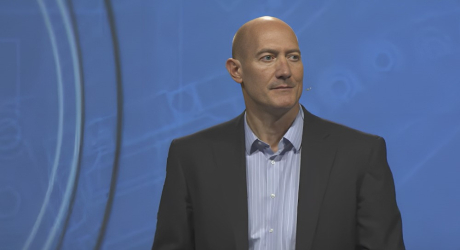Elizabeth Holmes, the Theranos Scandal, and the ‘Fake It Till You Make It’ Strategy from Silicon Valley
Elizabeth Holmes and Theranos' story could have possibly happened nowhere else than in Silicon Valley, which is renowned as a hub for innovation, tech talents, software companies, unicorns and even at times fraud.
Numerous startup founders are flocking to Silicon Valley with the hope of changing the world by building another Facebook or Google. Definitely, no other place in the world offers such wide opportunities for young entrepreneurs to pitch their disruptive business ideas to investors and chase the Silicon Valley dream; however, it happens that some founders are overly bullish and fail to deliver on their promises. In 2015, due to the former The Wall Street Journal reporter and author of "Bad Blood", John Carreyrou, it came to light that Elizabeth Holmes was one of them.

Table of Contents
- The Valley of Dreams
- Fake It Till You Make It
- “Move Fast and Break Things”
- Growth At Any Cost
- Let’s Roll The Dice
- Biotech Startups Can’t Break Things
- Elizabeth Holmes - The Fall from the Top
- The Myth of the College Dropout
- Was Theranos’ Mission Impossible?
- Elizabeth Holmes and the Power of Persuasion
The Valley of Dreams
The term “Silicon Valley” was coined by a journalist, Don Hoefler, in a 1971 article about computer companies located in the San Francisco Bay Area, formerly agricultural land, which started to be home to numerous leading businesses using silicon to manufacture their chips such as Intel or AMD. By combining these two facts, Hoefler created the name of the most famous hub for technology companies in the world.
Albeit Reid Hoffman exquisitely observed, “Silicon Valley is a mindset, not a location, ” it’s hard to find any other location with such a unique set of assets at its command like the abundance of capital from venture capitals, tech talents from world-class universities, and high-flying but collaborative culture. As a result, all of them make Silicon Valley an unbeatable hotbed for innovation and technology disruption with pervasive, infectious, and one of its kind buzz, attracting dreamers focused on changing the world.
Back to topFake It Till You Make It
Silicon Valley is a place like no other where everything is possible and everyone is working on something big. However, to build a unicorn with a billion-dollar valuation based on a breakthrough and world-changing innovation, companies and founders need money, often falling back to the ‘Fake It Till You Make It’ strategy to acquire funding from venture capitalists or business angels. Interestingly enough, lots of them have just an idea but still manage to find investors willing to provide seed capital for their innovative startups.
John Ioannidis, professor of medicine, epidemiology, biomedical data science from Stanford University School of Medicine, said in the Yahoo Finance documentary “Elizabeth Holmes: The 'Valley of Hype' behind the rise and fall of Theranos": “I suspect that there’s many other companies that don’t really have the ideas that they propose that they do that they have. They’re still working on them, but they haven’t tested them out. They are probably overoptimistic and maybe most of these ideas would fail. I don’t think that Theranos is an exception in that regard.”
Professor John Ioannidis from Stanford University, Professor Eleftherios Diamandis from University of Toronto, and The Wall Street Journal investigative journalist John Carreyrou, called into question the validity of Theranos's technology in 2015 which was a turning point for a then resoundingly successful startup.
Although ‘Fake It Till You Make It’ practice is widely used in Silicon Valley, some founders like Theranos founder, Elizabeth Holmes, take it to the extreme promising investors and the public the moon and pumping up their companies’ valuation to inconceivable levels, but eventually fail to deliver on their promises. At its peak in 2014, Theranos reached a valuation of over $9 billion, making Elizabeth Holmes the world’s wealthiest female billionaire, without actually possessing viable single-drop blood testing technology which was widely promoted in the media, including interviews and front covers in the most prominent magazines such as Forbes, or Fortune.
Back to top“Move Fast and Break Things”
This Silicon Valley’s long-time mantra was pioneered by Facebook’s founder, Mark Zuckerberg, who has always promoted trying out new ideas as fast as possible to put the products into consumers’ hands and see if they work in the marketplace, according to Katy Cook, author of “Psychology of Silicon Valley”. This mentality of innovating first and worrying about possible problems later has enabled numerous tech startups such as Facebook to thrive, becoming a standard for startups in Silicon Valley.
According to Andrew McCollum, a Facebook co-founder, “‘Move fast and break things’: It’s one of the principles that has guided Facebook’s development process since its earliest days. These five words encapsulate a philosophy of rapid development, constant iteration, and the courage to leave the past behind. Of course, some might wonder why you couldn’t just stop at the “move fast” part. The truth is that breaking things is unavoidable. (...) It’s generally impossible to understand how people will use a feature or react to a change until after it has been implemented and pushed out into production.” This statement is the quintessence of the Silicon Valley mindset.
In some circumstances, especially in technology where nobody knows where the limits of human capabilities are, such a strategy can prove to be extremely effective leading to technological breakthroughs, massive market valuations, and changing the world. However, there is a sense that agility, sometimes carried to the extremes, with total disregard for reality, especially in sectors tied with human health, may lead to repercussions that may get out of hand, as happened in the Theranos case, which brought into use faulty and untested blood-testing devices.
Back to topGrowth At Any Cost
At the very basis of Silicon Valley's philosophy lies the desire for constant growth, which ruled Theranos and many other startups. As startups located in the Bay Area usually shoot for global success in the global context, they are dependent on external capital from venture capitalists that provide funds but simultaneously demand from them, constant growth and profits. This pervasive pursuit of growth frequently pressures companies into quality compromises, eliminating well-balanced innovation as startups are forced to move faster and faster, constantly operating under the threat of losing the next round of funding.
According to a tech journalist, Alison Griswold, the main motto of investors in Silicon Valley is “growth at any cost” supercharged by speed and profit. Return-hungry venture capitalists are constantly dangling funding rounds exceeding $100 million called mega-rounds before startups putting them under pressure to move fast, even at the cost of breaking things.
Startups’ founders, i.a. Elizabeth Holme, taking part in the never-ending pursuit of capital are exposed to danger resulting from their own mistakes caused by short-term thinking focused solely on market capitalization and growth. As growth has become the guiding principle of Silicon Valley, many startups tend to experience overloaded systems and confusion by taking on too much and too quickly, leading at best to wrong market capitalizations, and at worst, to bankruptcy or prison.
Since the scale of the phenomenon is greater than we think, Theranos is not the only company that broke things; Uber and Zenefits are two others who don't have good press either.
Back to topLet’s Roll The Dice
Following the “Move Fast and Break Things” philosophy, Theranos, the biotech startup, signed up a contract with the second-largest pharmacy store chain in the US, Walgreens, to offer in-store blood tests that required only a few drops of blood at more than 40 locations, before finishing the beta testing phase. The blood tests were supposed to be performed very fast using small automated devices the company had allegedly developed, whereas it turned out that the blood tests’ results performed with Theranos devices were totally inaccurate, causing plenty of trouble for Walgreens’ patients. Not only Theranos decided to play the odds, but also Walgreens ventured into the deal without “checking whether Theranos' test results were accurate,” according to Nick Statt from THE VERGE. Reportedly Walgreens feared that Theranos would move ahead with another drugstore chain, leaving them behind.
As the primacy of growth in Silicon Valley relates not only to startups but all companies, nobody wants to miss the next big thing and missed opportunities are perceived as worse than failures. Bearing that in mind, it’s easier to understand why Walgreens, in search of a way to accelerate growth, didn’t want to let “groundbreaking technology” slip through their fingers which seemed to be worse than running the risk of the debacle.
The same growth-oriented motives were driving Theranos. Even though the testing phase didn’t come to an end, Elizabeth Holmes, the CEO of Theranos, and the Theranos team decided to take the plunge and put unfinished technology on the market. It was a hazardous decision, but it made an unknown startup look like a viable company, inflating the company’s valuation to an exorbitant $9 billion.
From a PR perspective, partnering with Walgreens not only lent credibility to Theranos but also made it look good in the investors' and public’s eyes, making Elizabeth Holmes a front cover celebrity who appeared in the leading business magazines as an epitome of success and innovation. However, lack of viable substance standing behind that deal, eventually turned out to be killing, especially for Elizabeth Holmes and her, now-defunct company, Theranos.
Back to topBiotech Startups Can’t Break Things
If Theranos were a tech startup, everything would probably be fine as tech companies often organize their own beta tests, giving real users an opportunity to test their products in a production environment to detect any bugs or issues before releasing a product to a wider audience. In software, tech companies iterate constantly, throwing the subsequent version of the products out to see how people respond. Depending on people’s feedback, software companies are able to make their products better and better.
Theranos wanted to use the same software development model and apply it to medical diagnostics, basically ignoring the fact that they weren’t a tech startup creating software whose bugs basically don’t harm anybody directly. As a matter of fact, it was a biotech startup with faulty technology that influenced millions of people’s lives, eventually putting them in danger.
Erika Cheung, former Theranos employee, during the talk at Stanford University, said: “I think at Theranos they were trying to take the same software model, but with medical diagnostics. And you can’t do that. You decide, okay, I’m gonna launch this product, sacrifice six patients and see if some respond well and I can move into the other direction to iterate and improve on these medical diagnostics. It's a different industry, a different field, it’s not something you can test on a few users here and then change how the product looks like. It’s just a very different industry. You just can’t do that in health care.”
The word bio makes a real difference in this context as Theranos tests were supposed to be a game-changer for the blood testing sector and health care, but instead of benefiting the health of patients, they did more harm than good. In 2016, after an inspection of Theranos’ Newark, California lab, the Centers for Medicare and Medicaid Services (CMS) reported that the company’s facility caused "immediate jeopardy to patient health and safety". Certainly, Theranos' tests shouldn’t have been launched in the market at all as they failed to deliver on what they were supposed to do.
Back to topElizabeth Holmes - The Fall from the Top
The key character of Theranos story is Elizabeth Holmes who as a 19-year-old college dropout managed to persuade many influential people to buy into her grand vision of revolutionizing the healthcare industry in the twenty-first century. Her groundbreaking idea was to provide patients with access to hundreds of blood test results from just a single drop of blood and use them to make important medical decisions. The tests were supposed to be fast, cheap, and accurate.
Her grand and lofty vision gripped the imagination of Silicon Valley, reeling in a lot of influential figures as high-profile board members, including former US secretary of state George Shultz, former US secretary of defense James Mattis, and former US secretary of state Henry Kissinger. Due to extraordinary persuasion, networking skills, and charisma, Elizabeth Holmes also managed to attract big-name investors, including the media mogul Rupert Murdoch, Walmart’s Walton family, or Betsy DeVos, the secretary of education and her relatives. All those prominent people gave the company an air of legitimacy.
In 2015, Theranos was at its peak with a valuation of over $9 billion, making Elizabeth Holmes the world’s youngest female self-made billionaire. At that time, she was even compared to Steve Jobs, the Apple co-founder, whom she glorified and emulated with her black turtlenecks, describing her technology as the IPod of health care.
Even though Theranos seemed to be a very prosperous company, the truth was different. In reality, Elizabeth Holmes was trying to hide by all means that her technology was not working. To varnish the truth, she went as far as manipulating lab results, cheating government inspectors, terrorizing employees, or even showing John Biden a fake laboratory with staged equipment. Despite conspicuous deficiencies in Theranos blood-testing technology, Elizabeth Holmes resolved to scale the product and close a deal with Walgreens stores, bringing about serious consequences of mistaken medical decisions resulting from questionable test results given to thousands of patients.
Despite all Elizabeth Holmes’ efforts, the whole gambit started to come to an end, emerging the unwanted truth. In 2015, a series of Wall Street Journal exposés written by John Carreyrou, with the immense contribution of Theranos’ former employee, Tyler Schultz, revealed that Theranos was conducting most of the tests on third party devices instead of its proprietary Edison machines, as it claimed. What’s more, tests being carried out with the Edison machines largely delivered inaccurate results.
Media reports provoked closer scrutiny from regulators which led to a sequence of commercial and legal challenges from not only the U.S. Securities and Exchange Commission (SEC), and Centers for Medicare and Medicaid Services (CMS), but also from investors, former business partners, patients, and state attorneys general.
In 2016, Forbes lowered their estimate of Elizabeth Holmes’s personal net worth from $4.5 billion to nothing, just one year after she got to the top of the Forbes list of America’s Richest Self-Made Women, as Forbes estimate was based on Holmes’ 50% stake in Theranos whose shares were withdrawn from stock exchange trading.
Ultimately, Theranos was dissolved and liquidated in 2018 and Elizabeth Holmes not only didn’t become the next Steve Jobs but also she and Ramesh Balwani, Theranos COO, were indicted for wire fraud and conspiracy charges, facing up to 20 years in prison.
Back to topThe Myth of the College Dropout
The early success of Elizabeth Holmes was partly derived from Silicon Valley’s love and admiration for young entrepreneurs similar to Bill Gates or Mark Zuckerberg who dropped out of college to set up a company and change the world. Mainly the media and renowned billionaires tend to glamorize college dropouts presenting them as wunderkinder with big ideas.
In fact, there is a special aura around young college dropouts who make the impression that their time is valuable and their vision so time-critical that they don’t want to waste time studying. Elizabeth Holmes fell into that pattern, dropping out of Stanford University in 2004 and decided to use her tuition money as seed funding for her startup. Even though being a Stanford dropout made her story extremely compelling to the media, investors, and the public, a lack of specialized knowledge of chemical engineering could underlie her mistakes and bad decisions as Theranos CEO.
Even though Bill Gates or Mark Zuckerberg did drop out of college, they learned to code by themselves and knew the fundamentals of their companies inside out, whereas Elizabeth Holmes had a plan to rebuild the blood-testing services industry without actually understanding the basics. In the case of chemical engineering and bioengineering, achieving success with CEO possessing no scienfitic knowledge was impossible.
As Theranos was a biotech startup in contrast to tech companies such as Microsoft or Facebook, it had to follow some generic scientific laws which can’t be excluded from the equation. Certainly, Elizabeth Holmes would have been aware of them if she hadn't dropped out of school. Lack of knowledge, especially in bioengineering, may be immensely destructive.
Back to topWas Theranos’ Mission Impossible?
Looking at what happened with Theranos, you may think that Elizabeth Holmes’s lofty mission to change health care diagnostics by making “actionable information accessible to everyone at the time it matters most,” with just a few drops of blood was utopian.
Nothing could be further from the truth. Interestingly enough, there is a company named Genalyte that has managed to create a diagnostic device called the Maverick™ Diagnostic System (MDS) which is able to “perform multiple simultaneous rapid tests on a small volume of whole blood or serum,” according to their website. This is exactly what Elizabeth Holmes promised in her bold statements relating to her “groundbreaking” technology.
There is a chance you have never heard of Genalyte as their CEO, Ashraf Hanna, hadn’t tried to be put on the cover of each business magazine before their technology started working. More importantly, he has extensive executive experience in several life sciences companies including Verily, Genentech, and ORIC Pharmaceuticals which reached a $1 billion valuation after IPO. Moreover, Ashraf Hanna not only studied Physics and Economics at the University of Chicago, but also has a Ph.D. in Physics from Harvard, and an M.D. from the University of Massachusetts. What’s more, the members of the Board of Directors at Genalyte are not just big names who know nothing about life sciences but carefully chosen professionals with related experience and achievements.
It clearly shows that running a startup in life sciences, apart from passion and determination, requires tons of knowledge and experience and, in fact, without hard data, know-how, and the right leadership, it’s difficult to achieve success. Furthermore, it’s unacceptable to use work methods taken from other industries such as software engineering as businesses based on life sciences and biotechnology have their own laws which are different from tech startups, and methods that work in one industry can’t be transferred directly into another.
Back to topElizabeth Holmes and the Power of Persuasion
So how did it happen that Elizabeth Holmes managed to raise $700 million from investors without actually having a viable technology nor a good command of the blood diagnostic industry?
The answer lies probably in Elizabeth Holmes' amazing power of persuasion, intelligence, and charisma which opened her plenty of doors to the world of the rich, influential, and famous.
Even though Elizabeth Holmes was just 19 when she devised the idea of starting a company, she was aware that to persuade investors to grant her funding for Theranos, she needed to make an impression of a credible person. She created her image with precision following all guidelines which show how to present yourself as an authority. Additionally, by implementing some distinguishing characteristics specific to Steve Jobs such as black turtlenecks, she managed to link herself with his legend which turbocharged her credibility even more. Consequently, people started to call her the next Steve Jobs, but that idea was ignited by Elizabeth Holmes who was immensely fascinated with the Apple founder.
As it can be seen, Elizabeth Holmes was trying to elevate her authoritativeness at all costs. She even resolved to lower her voice pitch to create an image of a powerful leader. Her actions were based on facts as it was proved in a study conducted by Duke University based on the analysis of 792 male CEO voices that Chief Executive Officers with deeper voices managed larger companies, enjoyed longer tenures, and as a result, earned more money. It wasn’t confirmed that the same thesis is true for female CEOs, but Elizabeth was operating mainly in the men’s world so she wanted to blend in as much as possible.
Another factor which helped Elizabeth Holmes win plenty of top-ranking people over was her outstanding charisma. Tyler Schultz, the former Theranos employee, who revealed the truth about faulty Theranos technology, said at Stanford University that Elizabeth Holmes was extremely charismatic. Even though he was working with the Edison device and knew that the test results it provided were inaccurate, she was able to make him feel motivated and keep working. So it comes as no surprise that so many influential people with big names, but without specialized lab testing knowledge listening to her compelling speeches about the world-changing Theranos vision were behind her all the way.
As Margaret O’Mara, a professor at the University of Washington and a historian of Silicon Valley observed: “Here was a photogenic, telegenic young woman posing as the female Steve Jobs. It was an incredibly alluring narrative that everyone wanted to believe.”
Conclusion
Nobody likes to fail, however, sometimes it’s necessary to admit that some ventures need to fail. For sure, Elizabeth Holmes wasn’t able to admit that her beloved Theranos didn’t meet her high hopes and expectations. Yet, sometimes there comes a point where you have to face the truth. Admit defeat and move on. But Elizabeth Holmes couldn’t do it as failure was not an option for her. However, it would be better for everybody if she had decided to be transparent about Theranos' problems.
Successful leaders never stick to unsuccessful and inviable projects, pretending that everything is great. Instead, they learn from their mistakes, pivot, and start something that has a better chance of success, but Elizabeth Holmes was unable to admit her misjudgment and will have to bear the consequences of her wrong decisions.
Like our content? Follow BUSINESS POWERHOUSE on LinkedIn, Twitter, Facebook, Instagram, and Pinterest to stay up-to-date on our latest articles.
Author: Justine Ilone Siporski is Editor-in-Chief & CEO of BUSINESS POWERHOUSE, the founder and CEO of LANGUAGE EMPIRE, coach, trainer, investor, and columnist dedicated to the advancement of entrepreneurs, investors and the C-suite (CEOs, CMOs, CFOs, CIOs). Her key mission is to support leaders, business people, and investors in achieving their highest potential, making the right business and investing decisions, and expanding their horizons.
Back to top






Comments